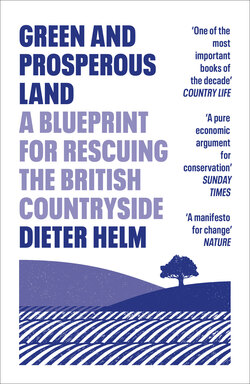Читать книгу Green and Prosperous Land - Dieter Helm - Страница 22
More consumption
ОглавлениеThe pressures of population growth, housing and infrastructure are multiplied through the rising levels of consumption. As GDP goes up, so does consumption. Indeed, most of the increases in economic growth in Britain are driven by spending ever more. Britain has a very high propensity to spend all of its income – and indeed more than its income – by increasing debt levels. In 2018, this was reflected in the average household spending £900 more than their income.[18]
Some numbers help to bring a perspective to this challenge. If GDP grows at 3 per cent per annum, it will double in less than 25 years. It is just the power of compound interest. Britain probably won’t quite make 3 per cent, but, as a rough guide, by 2050 a doubling is a plausible assumption to make.
Imagine what this would look like in 2050. Although the extra income would be spread over more people, think what you would spend twice your current income on. The better-off might buy bigger homes or even more second homes. The bulk of the population will buy more holidays, more clothes and more services. Most of this stuff has the potential to further damage the natural environment and create even more waste.
It is this that leads more radical greens to question whether we should be allowed to keep on spending so much or whether a more frugal lifestyle is required to ‘save the planet’. It is not hard to empathise with this sentiment. Looking beyond Britain, growth rates in China, India and increasingly in Africa are more like 5 to 7 per cent per annum. China has spent nearly 30 years growing at around 10 per cent per annum, which is a doubling of the size of its economy every seven years, and this is reflected in the new affluence of the emerging Chinese middle classes who now turn up in Britain in significant numbers as tourists. Whatever the benefits of all that extra consumption to the Chinese people, from a global environmental perspective, the spectacular GDP growth of China since 1980 has been a disaster for climate change, water resources, the state of the seas and for biodiversity. And it is one that continues to gather pace.
There are two dimensions to this extra consumption that impact on the natural environment: how much is spent; and what it is spent on. How much is spent should not be based on the 2 to 3 per cent GDP growth number, and there is a lot to be put right before economic growth can be accommodated, including the impacts of all the fiscal deficits, trade deficits and quantitative easing that pumped consumption up artificially high since the financial crisis of 2007/08. Current growth and spending levels are not sustainable: we are living beyond our means. It is not that these numbers cannot rise without damage to the environment. They can. Rather, it is that the numbers need first to be adjusted so that they are in fact sustainable.[19]
The amount of consumption growth after these corrections depends on technical progress, and there is lots more of this to come. Rebased, what will the resultant incomes be spent on? This depends on prices and planning. Current spending does not properly take account of all the external negative impacts on the environment – the externalities – and it should. What this requires is that these externality costs are reflected in the prices we pay online and in the shops. Food is artificially cheap because farmers do not pay for the pollution they cause. New houses are artificially cheap to build because the builders do not pay for all their wider impacts and the infrastructures they require. Packaged goods are artificially cheap because we don’t pay for all the cardboard and plastic. Once all these externalities are included – if the polluter-pays principle is properly applied – what we spend our money on may turn out to be rather different than business-as-usual suggests.
